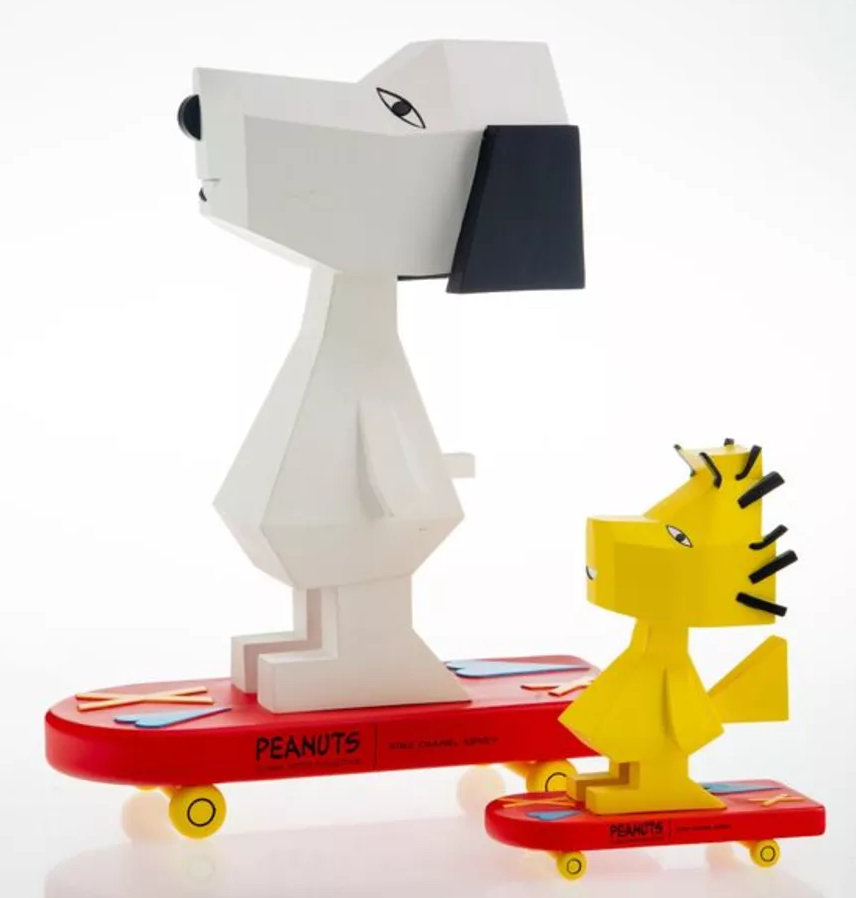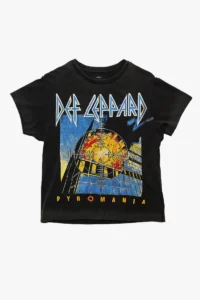Nina Chanel Abney, a contemporary powerhouse in the art world, is celebrated for her bold and thought-provoking works that explore themes of race, identity, and power dynamics in modern society. In 2019, her connect with The Skateroom — a socially conscious art initiative combining fine art with skate culture — resulted in two captivating pieces featuring Snoopy and Woodstock, beloved characters from Charles Schulz’s Peanuts. These works are more than just playful adaptations; they are layered commentaries on pop culture, consumerism, and artistic identity.
In this article, we will delve into the significance of Abney’s Snoopy and Woodstock artworks, unpack the cultural and artistic resonance of her connection with The Skateroom, and explore how these works bridge the gap between high art, skate culture, and broader social discourse.
The Artist: Nina Chanel Abney
Nina Chanel Abney’s work often teeters between abstraction and figuration, using vibrant, saturated colors, symbols, and fragmented compositions to challenge the viewer. Her art reflects the digital age, where visual overload is the norm. Abney’s style is bold, unapologetic, and deeply rooted in storytelling, drawing influence from graffiti, hip-hop, and cartoons.
Her engagement with Peanuts characters Snoopy and Woodstock marks a fascinating departure into the realm of mainstream pop culture. However, this shift is far from superficial; instead, Abney uses these familiar characters to extend her critique of society, adding complexity to her visual narrative. This approach mirrors her broader mission to make her art accessible while maintaining its thought-provoking edge.
The Skateroom: Fusing Art and Skateboarding
The Skateroom is a unique platform that collaborates with artists to produce limited-edition skateboard decks as functional art pieces. The organization bridges the worlds of fine art and skate culture, leveraging proceeds to fund social impact projects, such as building skateparks and supporting youth programs globally. Collaborators have included iconic names such as Ai Weiwei, Shepard Fairey, and now Nina Chanel Abney.
This initiative aligns with Abney’s commitment to inclusivity and social justice. Skateboarding, as a subculture, is inherently democratic and rebellious, much like Abney’s art. The collaboration with The Skateroom positions her work in a context that is both accessible and culturally dynamic, resonating with diverse audiences beyond traditional gallery spaces.
Snoopy and Woodstock (Two Works): An Artistic Analysis
The two works in this series are instantly recognizable yet uniquely Abney’s. Featuring Snoopy and Woodstock — icons of innocence and nostalgia — Abney reimagines them in her signature style. The compositions are vibrant, fragmented, and layered, blending Schulz’s minimalist cartoon aesthetic with Abney’s maximalist, chaotic energy. Below, we break down the artistic elements and broader implications of each piece.
Visual Aesthetics
1.Color and Composition:
Abney’s color palette is electric, combining bold primary colors with unexpected juxtapositions. The backgrounds are dynamic, often featuring geometric patterns, overlapping shapes, and textual fragments that create a sense of movement and tension. The interplay of abstraction and figurative elements draws viewers in, encouraging them to decode the visual chaos.
2.Character Representation:
Snoopy and Woodstock, Schulz’s iconic duo, are rendered with a twist. Abney distorts their forms slightly, exaggerating proportions and introducing angularity. This manipulation transforms the familiar into something uncanny, inviting reflection on how nostalgia is often repurposed in contemporary culture.
3.Text and Symbols:
True to her style, Abney incorporates cryptic symbols, numbers, and text into the compositions. These elements disrupt the simplicity of Schulz’s world, suggesting themes of commodification and the hyper-commercialization of beloved characters.
Cultural Commentary
1.Nostalgia and Commercialism:
By using Peanuts characters, Abney taps into a shared cultural nostalgia. However, her treatment of these characters critiques their commodification. Snoopy and Woodstock are no longer merely symbols of innocence but are reframed as icons of consumer culture, emblematic of the tension between art and commerce.
2.Skate Culture and Accessibility:
The choice to place these works on skateboard decks amplifies their message. Skate culture, historically anti-establishment, provides a platform to challenge hierarchies in the art world. Abney’s collaboration with The Skateroom democratizes her art, making it accessible to audiences who may not engage with traditional fine art spaces.
3.Intersectionality in Representation:
Abney’s works often explore identity and intersectionality. While Snoopy and Woodstock may seem apolitical, their reimagining within Abney’s framework opens the door to discussions about representation, inclusion, and the ways mainstream media shapes collective identity.
The Role of Skateboard Decks as a Canvas
The skateboard deck, as a medium, inherently challenges the traditional boundaries of fine art. It is functional, ephemeral, and accessible, embodying the spirit of skate culture. By placing her work on this unconventional canvas, Abney redefines the role of art in everyday life.
1.Art as Utility:
Skateboard decks blur the line between utility and art, emphasizing the fluidity of creative expression. Abney’s decks are not only visually striking but also functional objects, symbolizing the intersection of art, design, and sport.
2.Expanding Art’s Reach:
Traditional art spaces, such as galleries and museums, often cater to a specific demographic. Skate decks, however, reach a wider audience, engaging youth and subcultures that may feel excluded from mainstream art institutions.
3.Ephemerality and Collectibility:
Skateboards are subject to wear and tear, making them inherently ephemeral. This contrasts with the permanence of gallery art, challenging notions of value and longevity in the art world. At the same time, limited-edition collaborations with The Skateroom transform these decks into collectible items, bridging the gap between accessibility and exclusivity.
Abney’s Impact on Contemporary Art
Abney’s collaboration with The Skateroom exemplifies her ability to merge high art with popular culture while addressing critical social issues. Her Snoopy and Woodstock works reflect her commitment to accessibility, inclusivity, and social commentary.
1.Challenging the Status Quo:
Abney’s use of Peanuts characters subverts their traditional context, injecting them with new meaning. This approach aligns with her broader practice of challenging societal norms and questioning power structures.
2.Engaging Diverse Audiences:
By collaborating with The Skateroom, Abney reaches audiences beyond the art world, including skaters, youth, and fans of street culture. This expands the impact of her work, fostering dialogue across cultural and social divides.
3.Advancing Social Impact:
Proceeds from these works support skateboarding initiatives that empower youth and promote community building. This aligns with Abney’s commitment to social justice, reinforcing the idea that art can drive meaningful change.
Legacy of the Collaboration
The Snoopy and Woodstock skateboard decks represent a milestone in Abney’s career and a broader shift in how art intersects with culture. They challenge traditional notions of what constitutes fine art, emphasizing the importance of accessibility, utility, and social impact.
1.Redefining Art Spaces:
By placing her work in the context of skate culture, Abney expands the definition of art spaces, emphasizing the importance of reaching diverse audiences.
2.Bridging Generations:
The use of Peanuts characters bridges generational divides, appealing to older audiences familiar with Schulz’s work and younger audiences drawn to skate culture and contemporary art.
3.Inspiring Future Collaborations:
This collaboration sets a precedent for future partnerships between artists and socially conscious organizations, highlighting the potential of art to drive both cultural and social change.
Impression
Nina Chanel Abney’s Snoopy and Woodstock works for The Skateroom encapsulate the power of art to transcend boundaries, provoke thought, and foster inclusivity. These pieces are not merely decorative; they are dynamic commentaries on the intersections of art, culture, and commerce. By collaborating with The Skateroom, Abney reaffirms her commitment to accessibility and social impact, redefining what it means to be a contemporary artist in an increasingly interconnected world.
The Snoopy and Woodstock decks stand as a testament to Abney’s ability to infuse familiar icons with new meaning, challenging audiences to see beyond the surface. They remind us that art, in all its forms, has the power to inspire, unite, and drive change — whether hanging in a gallery or rolling through the streets.
No comments yet.








